My grandfather, Eli Adalman, was a passionate amateur photographer who lived in Baltimore, Maryland. Many of his negatives have been lost over the years, but during the past summer, when everything around here was locked down, I began scanning and cataloguing some of the ones that survived. Most are readily identifiable family photos of life in Baltimore the 1940s and 1950s. But two rolls were a mystery.
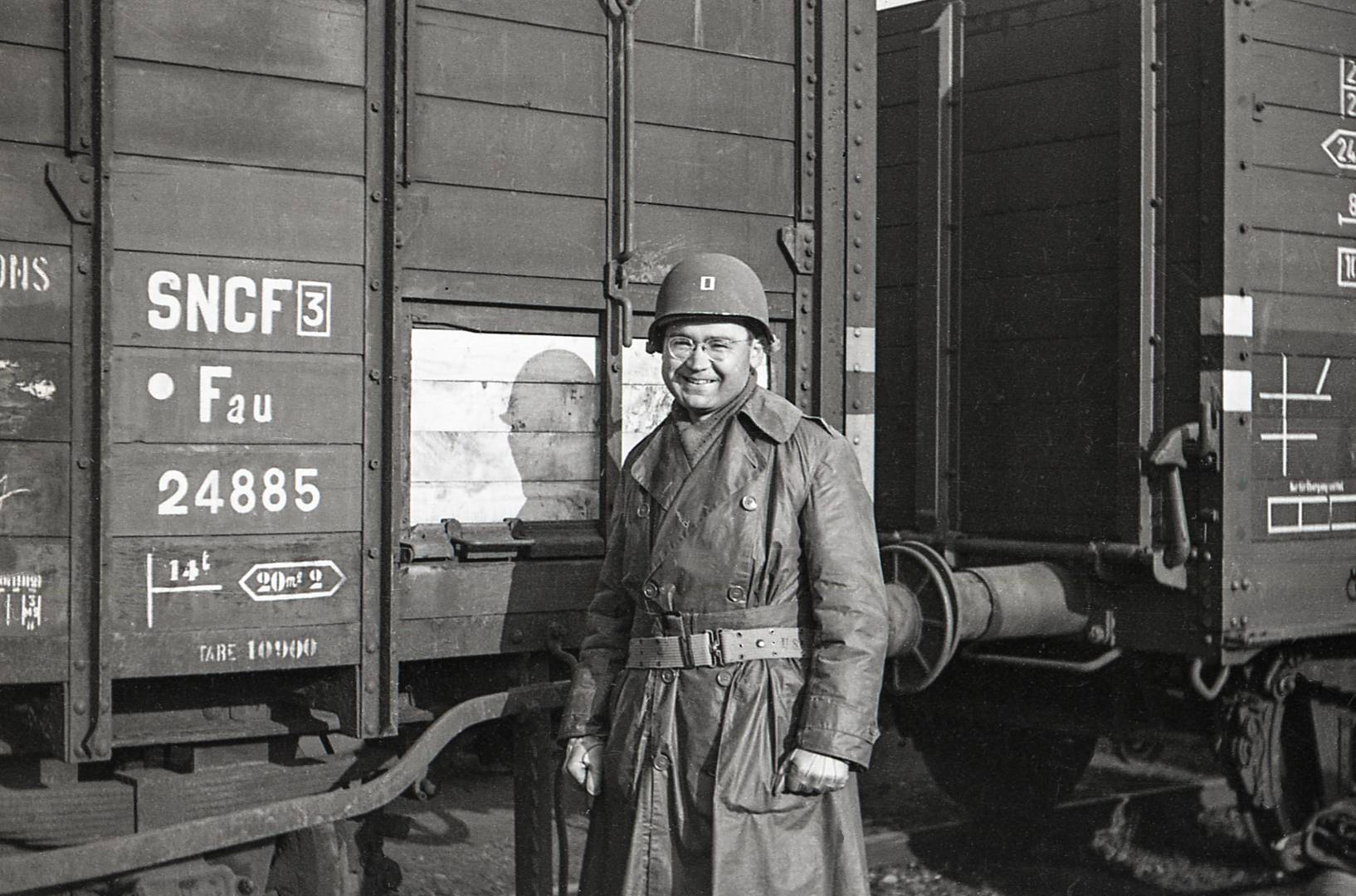
Click images to enlarge and view as a slide-show
These negatives showed scenes from World War II in the United States and through Europe. The mystery was that my grandfather never left the States during WWII, and no one that I knew of from his side of the family ever served in Europe. I circulated the photos to all of the family members that I could think of, but none of them knew of a relative who served in Europe either. Yet when I sent them to a distant cousin, who I had only recently met through the internet, the mystery began to unravel.
Discovery
That cousin recognized one of the people in the photos as his father, Philip Adalman. Philip was an ophthalmologist, and he served in the Army Medical Corps during the war. My cousin knew that his father had served in the Army, but he had not known where, or that he had ever been sent overseas. But the photos confirmed that he had been, and they recorded his journey in fascinating detail.
The first batch of images was taken in Camp Grant, an Army facility in Illinois specializing in training Army medical personnel. It follows Philip and other doctors and nurses through basic training before being sent overseas. There were several photos of one particular Army nurse that my cousin and others in the family do not recognize. This same nurse also showed up in photos taken later in London. Could she have been a wartime romance? We will probably never know.
England
After basic training, Philip was apparently posted to England, and there are several pictures that he took in and around London. They include a shot of Piccadilly Circus, with vintage cars and patriotic billboards, not to mention a surprising amount of traffic in view of the stringent fuel rationing.
That one photo seems to capture much of what it must have been like to be in wartime London. The mystery nurse also shows up in several of Philip’s pictures from London. In the image below, the bombed church is depicted in fine detail. Note the sign: This church, though blitzed, is still in use [in the] South Aisle.
France
After London, Philip probably followed the invading forces to France. There is one photograph of the town of Étretat in Normandy. I identified the town by scanning the coast of France using Google Maps until I found a modern view of the same chalk cliffs that are shown in Philip’s photo. Étretat is north of Le Havre and was many miles away from the invasion beaches. None the less, the image shows very serious beach fortifications that were part of Hitler’s “Atlantic Wall”. You can see a modern view of the town from exactly where Philip must have been standing on the Google Earth website (and here at Wikipedia).
From Normandy, Philip appears to have gone to Paris. There was only one photograph from the city, but it shows a clearly recognisable facade of the Arc de Triomphe de l’Étoile. I took a photo of the identical facade when I was in Paris in 2014.
After Paris, Philip’s next clearly identifiable stop was Reims. A photo of Reims Cathedral looks very similar to modern images that can be found on-line. He also photographed the Technical College in Reims, which was the Allied headquarters during the latter stages of the war, and the site of the German surrender on the Western Front. This building is still standing, and it doesn’t look a lot different now. Fittingly, it has been renamed as the Lycée Roosevelt (the Roosevelt High School)
Philip’s next stop was Arles. He only took one photo in Arles: a view of the Roman Arena looking south from the Rue de l’Amphithéâtre, from almost the exact spot where I captured the Arena in 2016.
Philip’s journey ended in Marseille, a city I also visited in 2016. Philip probably spent a long time in Marseille, judging by the number of photographs in the folder. His photos include several street scenes of soldiers and civilians.
Some of those locations have not changed much since WWII and can be seen on Google Earth. Many of his images appear to have been taken from a ship sailing into the Old Port in Marseille. You can see a partially sunken ship, and the ruins of the Marseille Transporter, a huge steel structure that bridged the Marseille harbor. It was destroyed during the Battle of Marseille in 1944.
Phillip’s photographic record stops in Marseille. Is that because Marseille was Philip’s last stop before returning home? Had he used up all of his film before travelling on? Or were there other photos that were lost like so many of Eli’s other negatives. We may never know.
As for Phillip’s gear, we won’t know that for sure either, but I can make an educated guess. Eli was an avid camera collector. His collection included two Graflex sheet-film cameras, a Rolleiflex, a Zeiss Ikon Super Ikona roll film camera, and several 35mm Zeiss Ikon Contax rangefinder cameras.
I used many of these cameras myself when I was learning photography. It seems likely that Philip took one of Eli’s Contax cameras with him when he enlisted, and held on to it throughout the war. I still have two of those cameras, and I like to think that one of them was used to take the photos that documented Philip’s WWII journey at a momentous time in history.
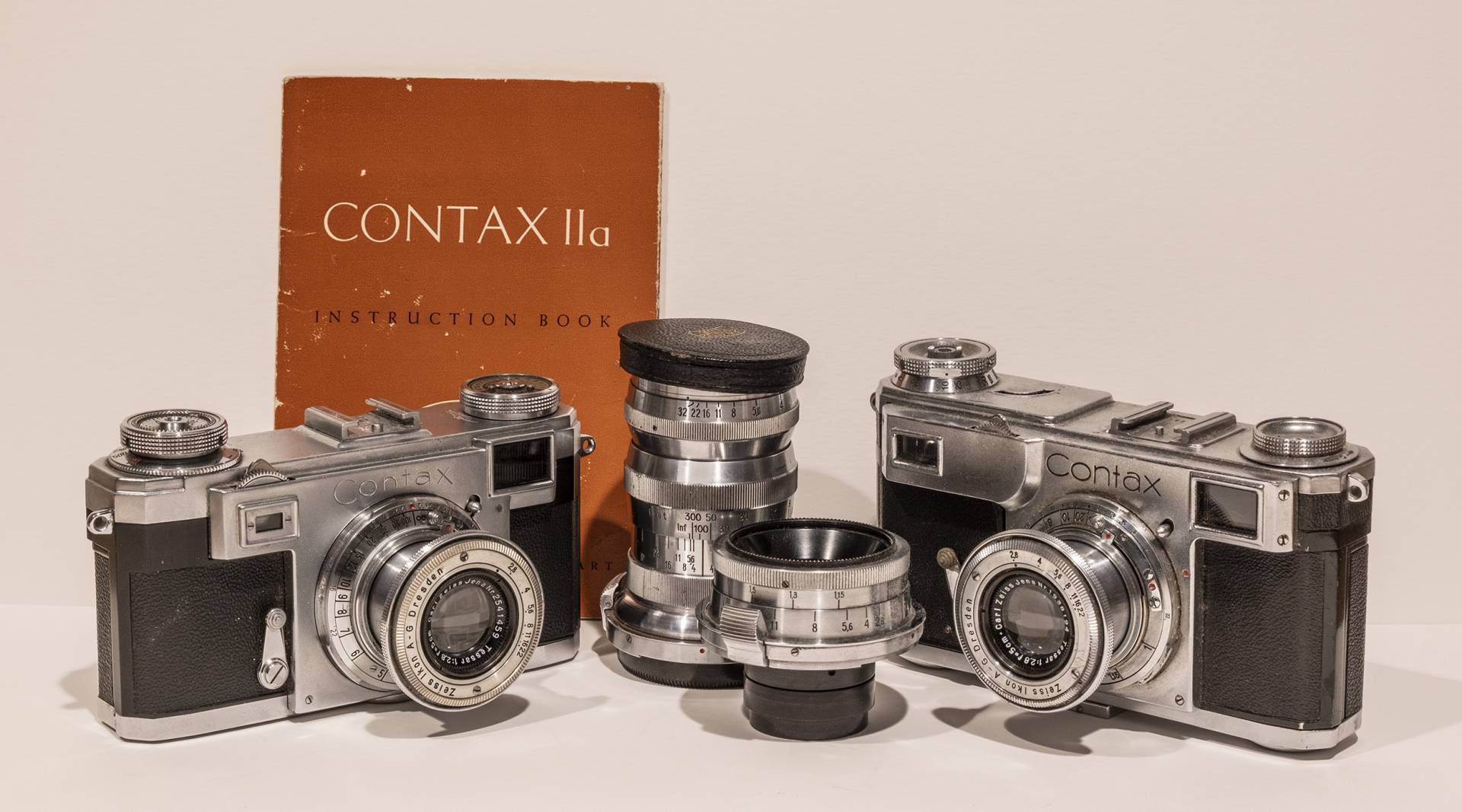
Philip survived the war and returned home. I can only assume that he brought the film with him and gave it to my grandfather to develop. Philip went on to be a successful ophthalmologist in New York, but in later years became estranged from his family, which is why it was so hard to identify the photographs.
He never talked to his son about the war, so it came as a surprise to him that his father had even been in France during the war. It is not unusual for veterans to be reluctant to talk about their wartime experiences, and as a result, many families have lost an important part of their history. My mother lost two cousins during WWII. She never talked about either one of them, and I only recently learned that I had been named for one of them.
Still, that silence makes it all that much more satisfying to uncover a mystery like this so many years later.

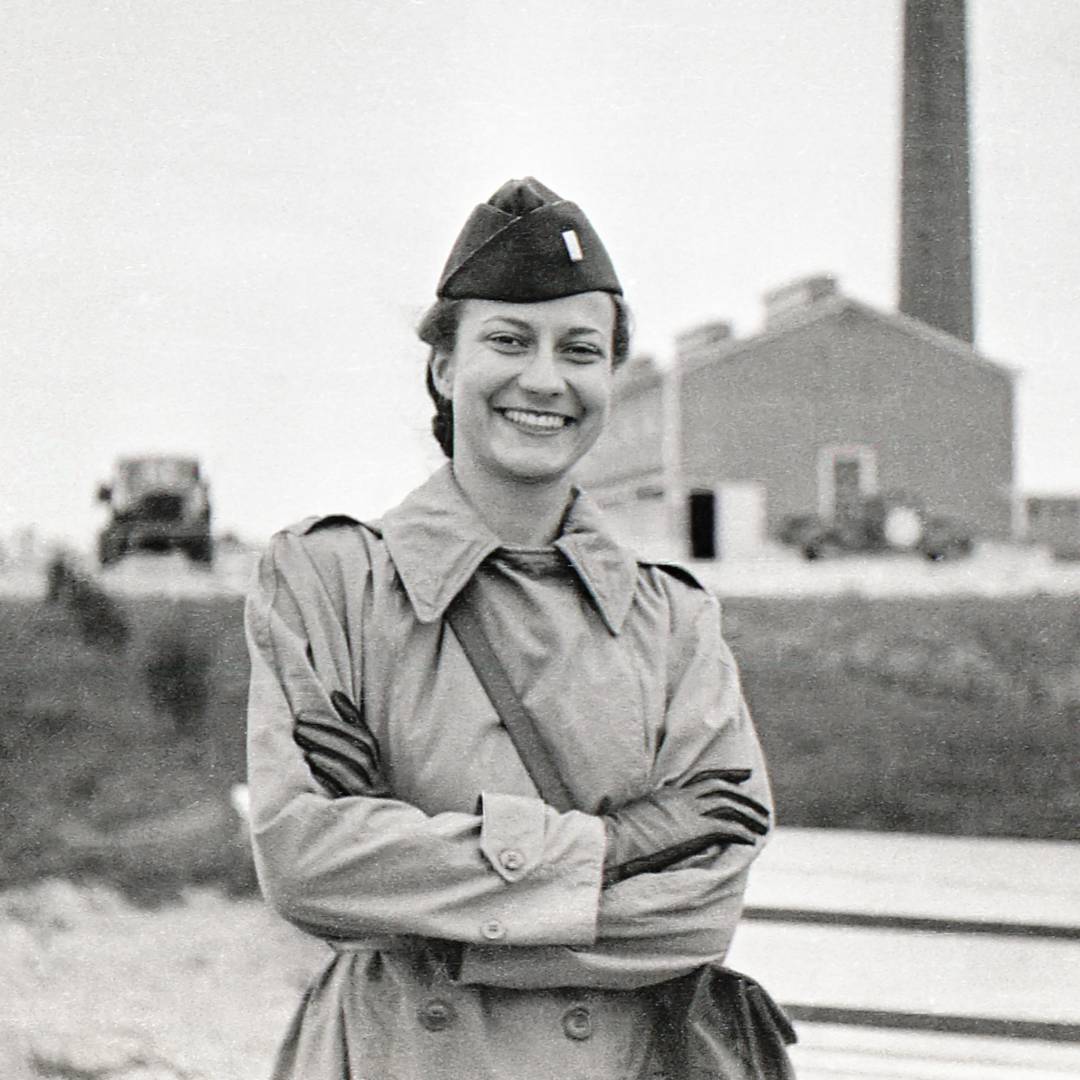
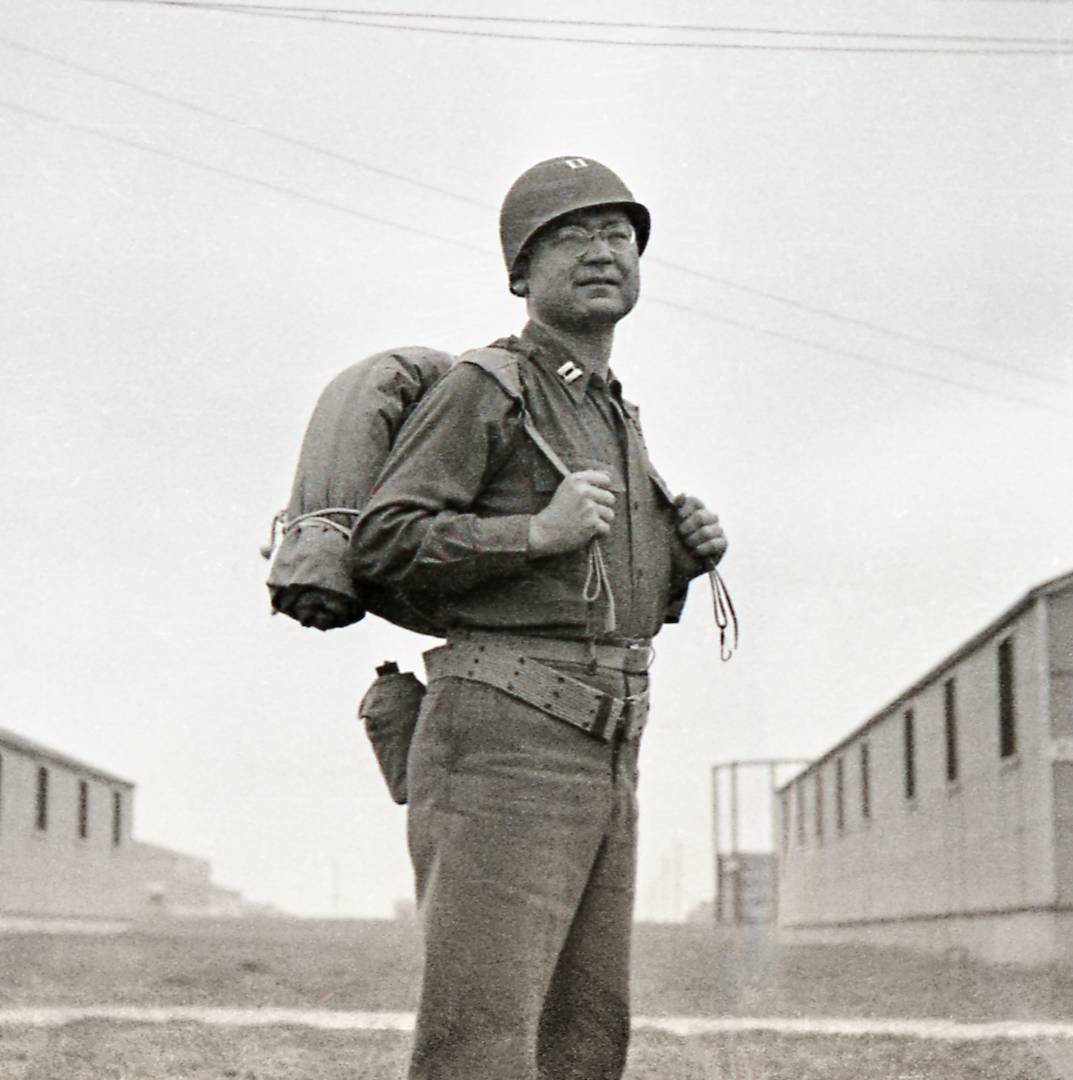
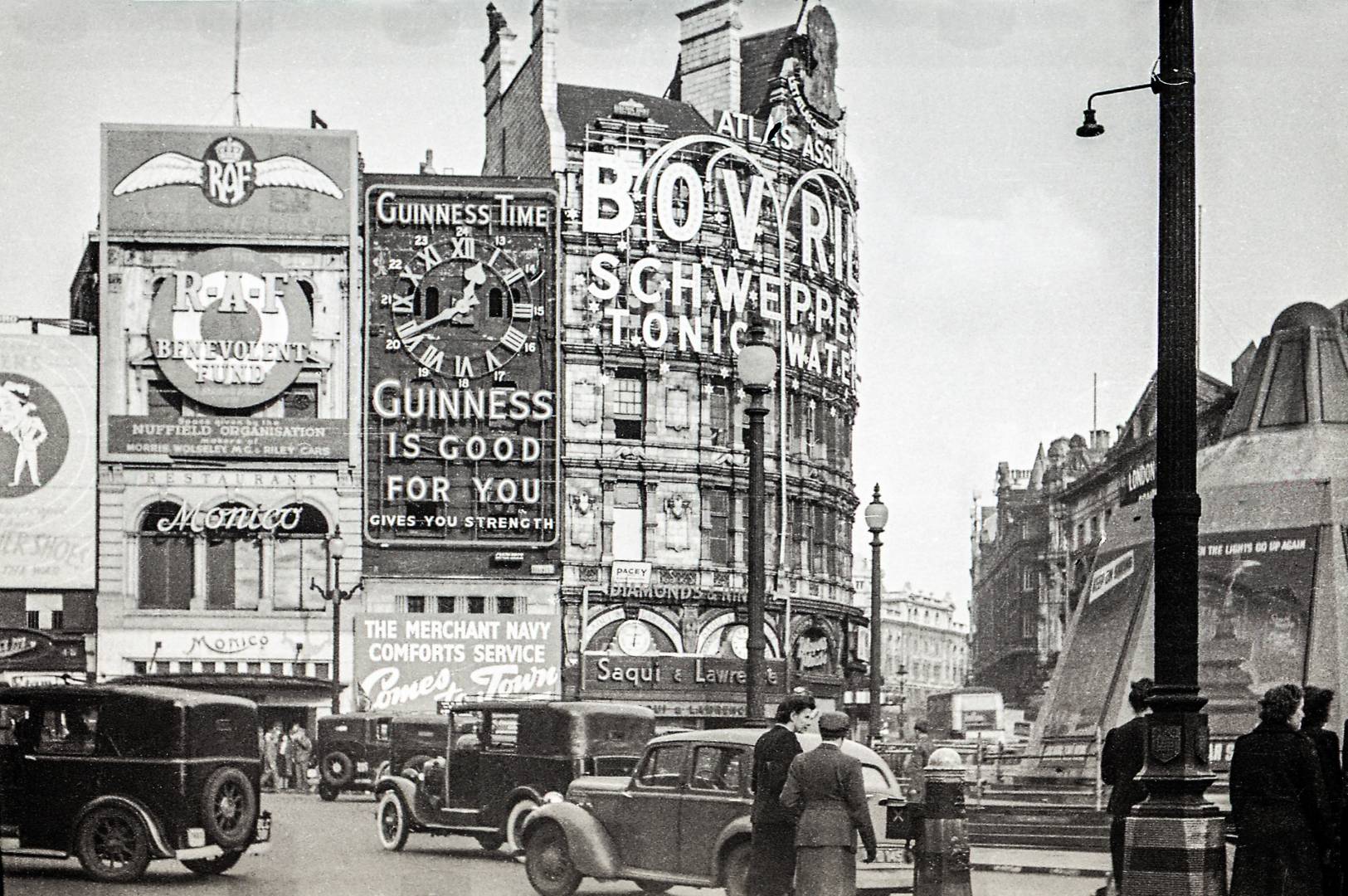
![This church, though blitzed, is still in use [in the] South Aisle](https://www.macfilos.com/wp-content/uploads/2021/01/Bombed-Church-in-London.jpg)
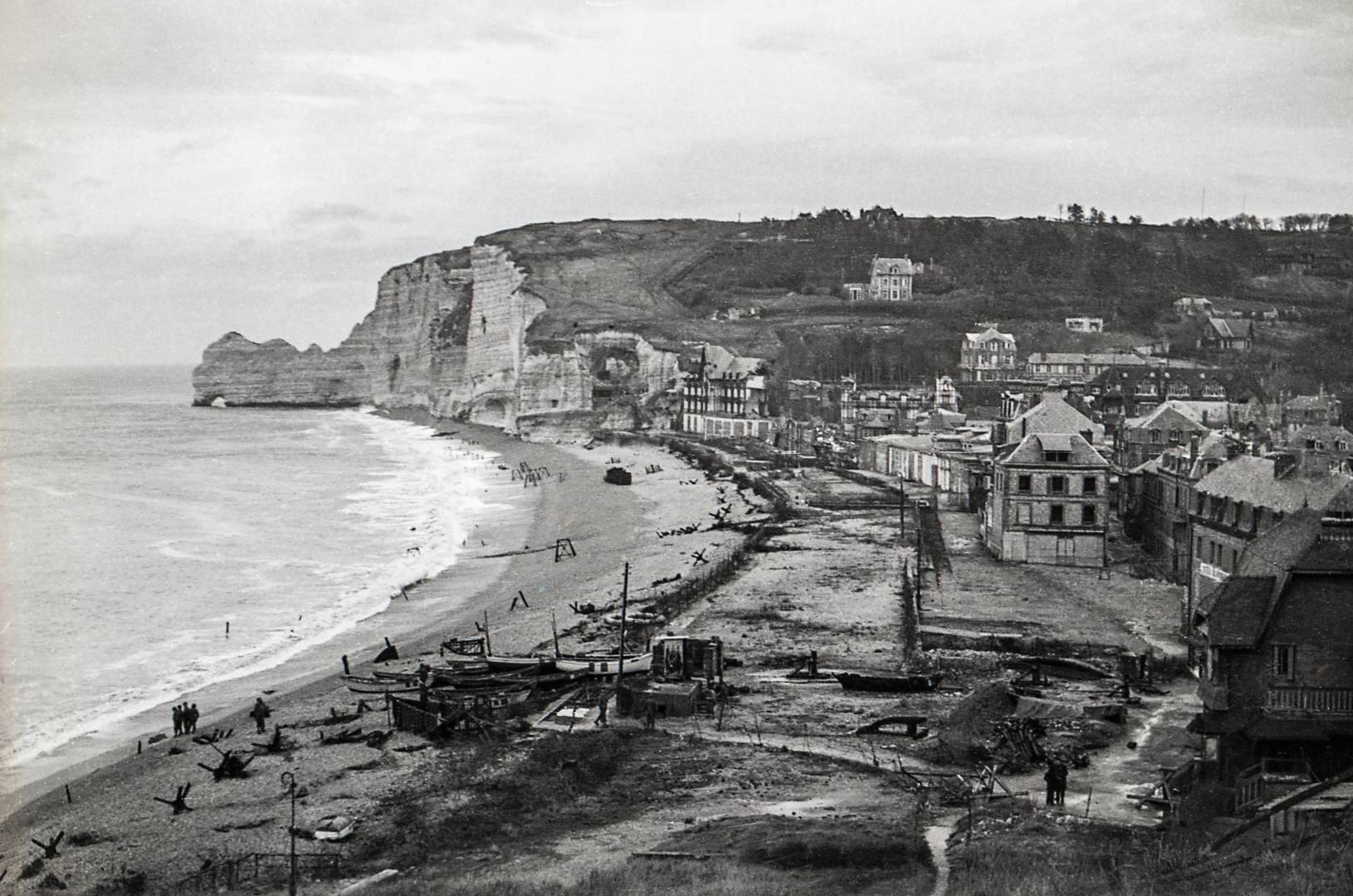
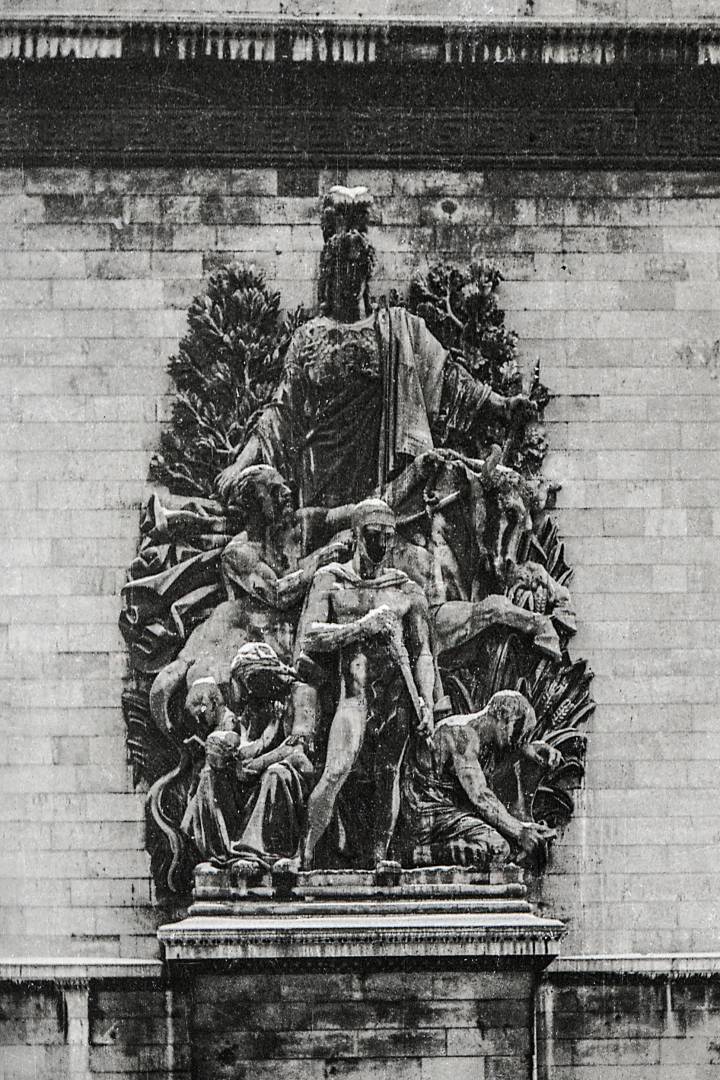
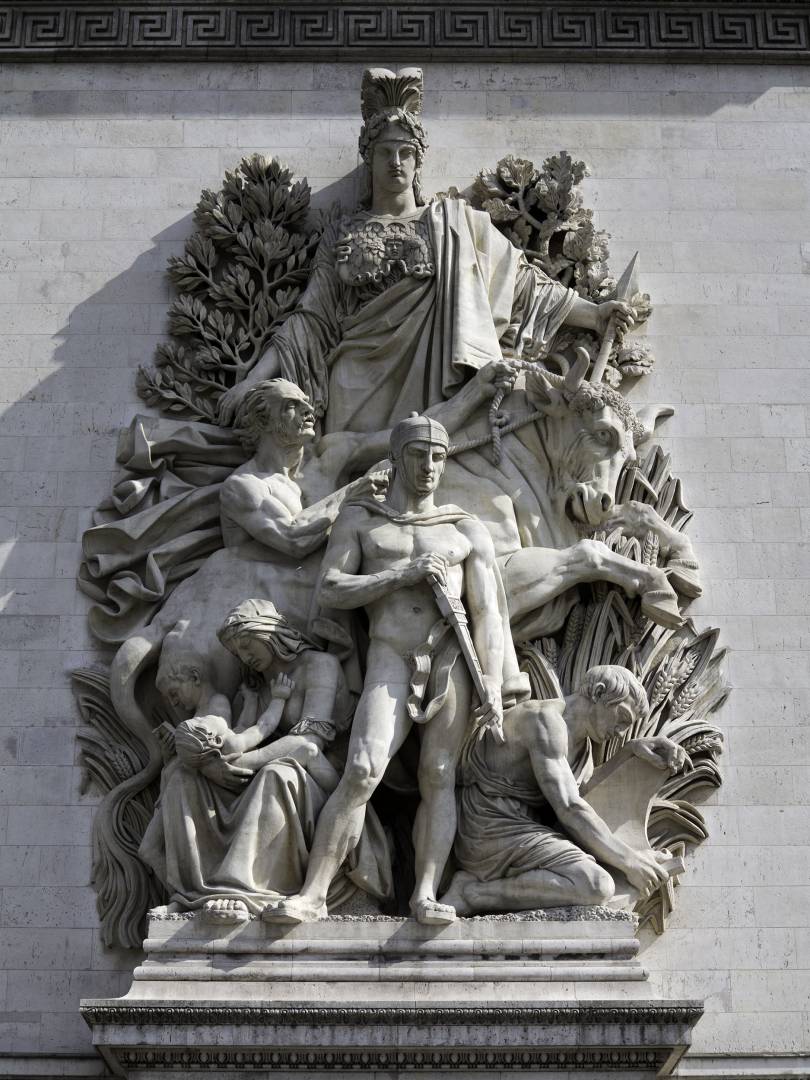
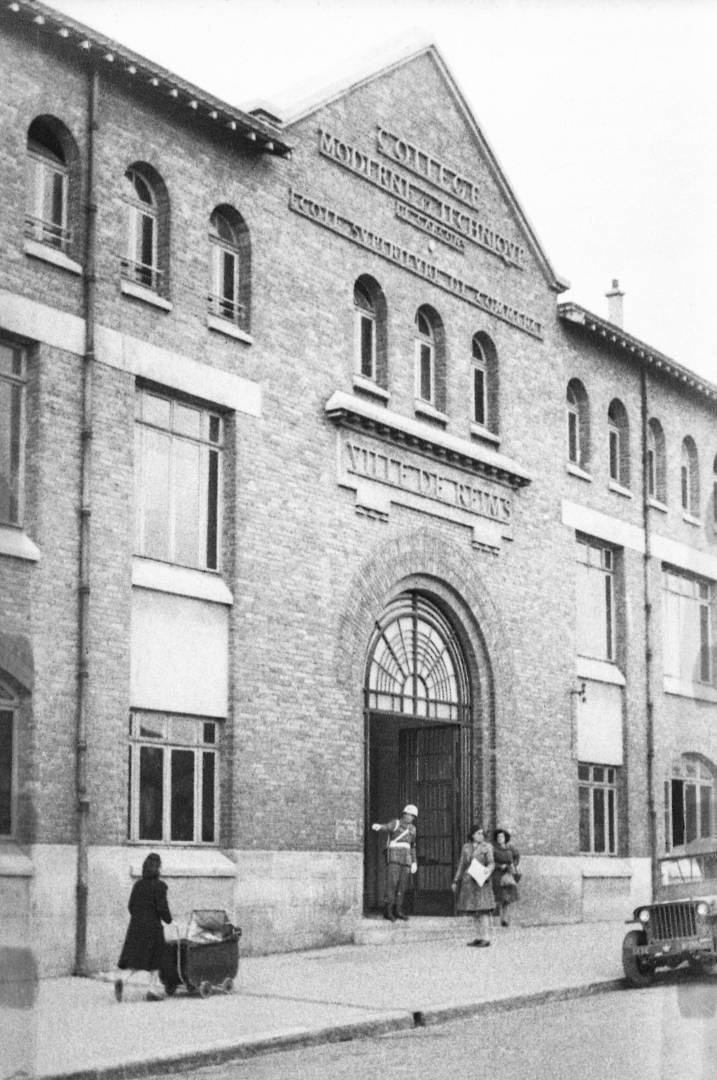
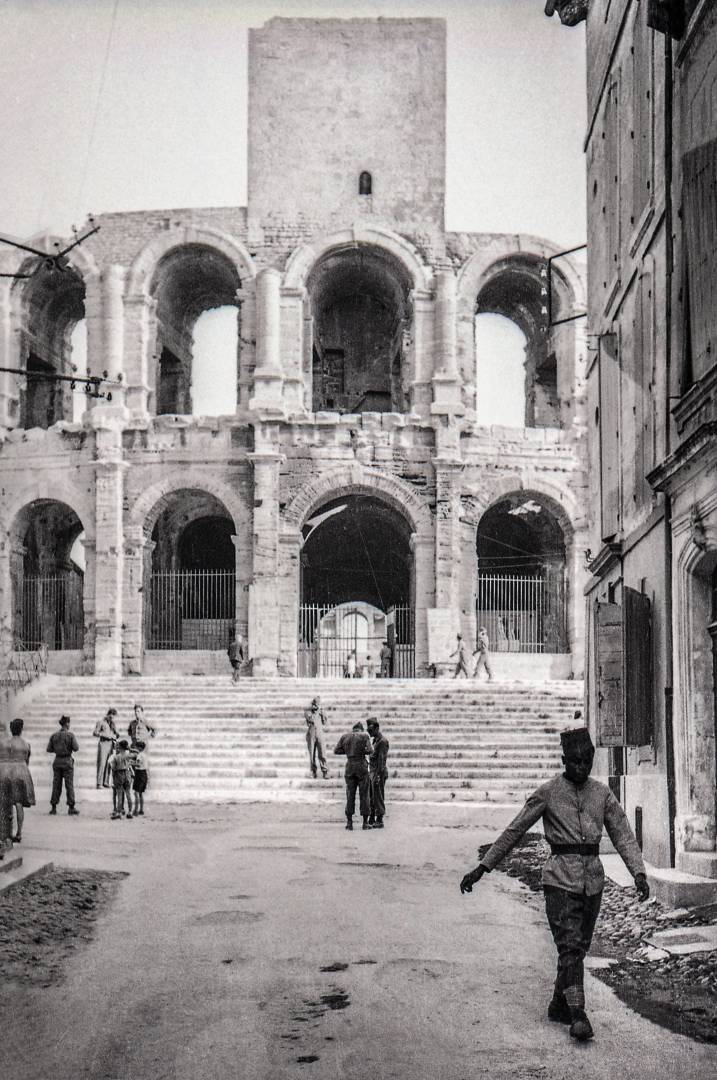
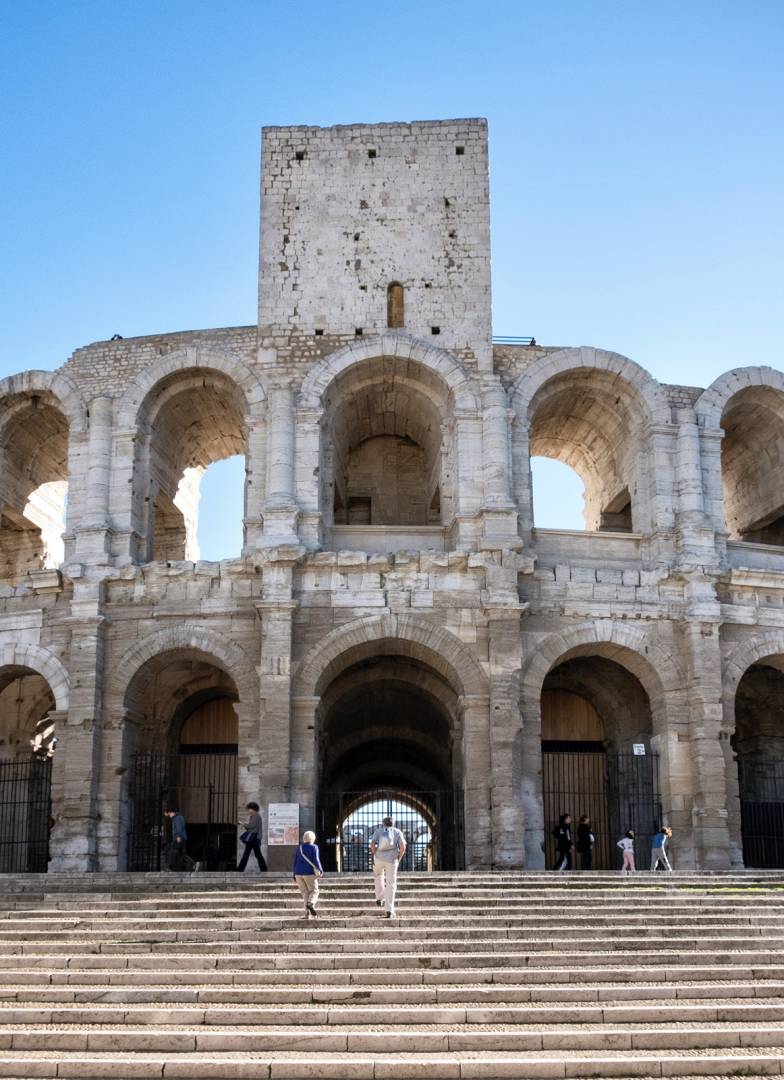
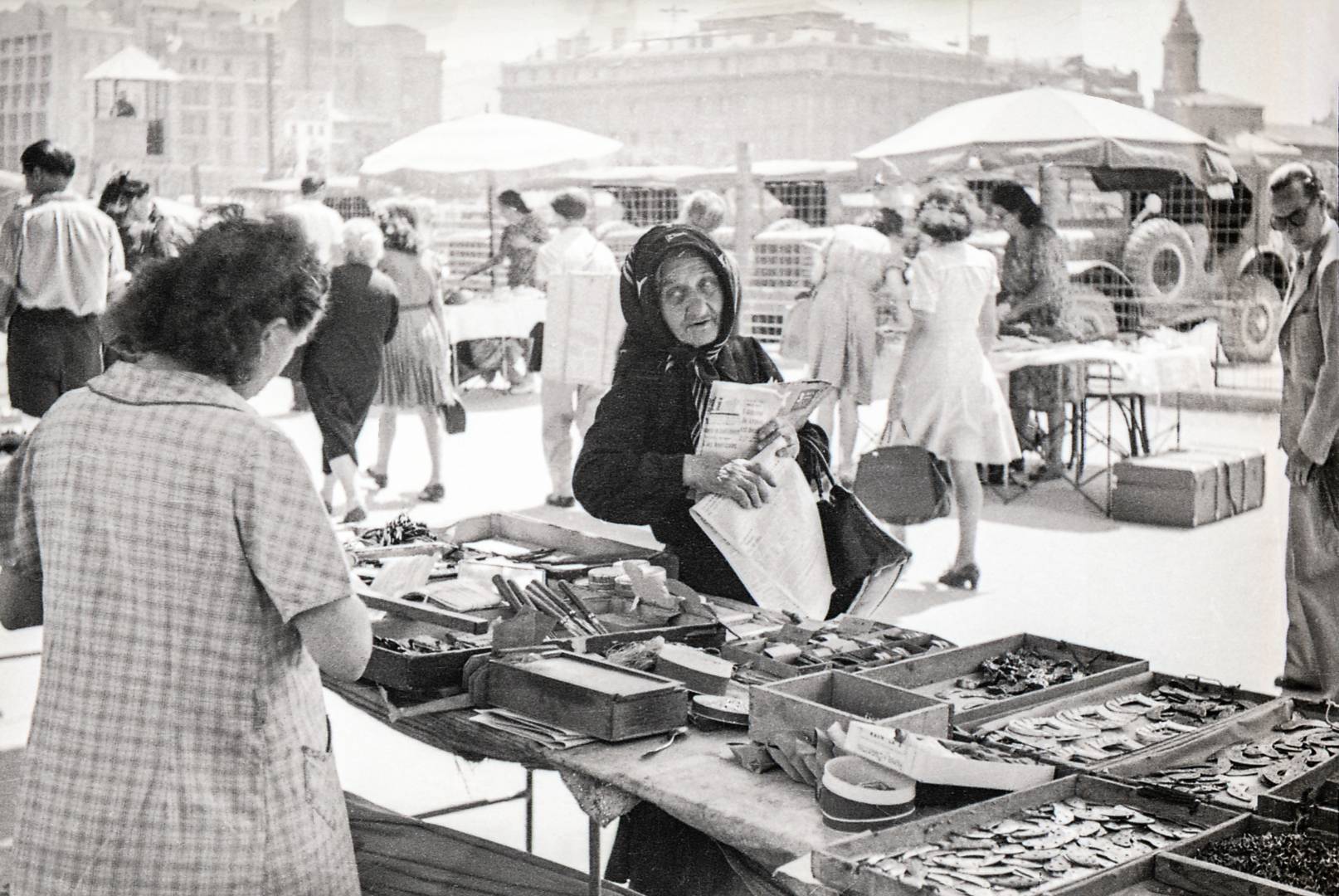
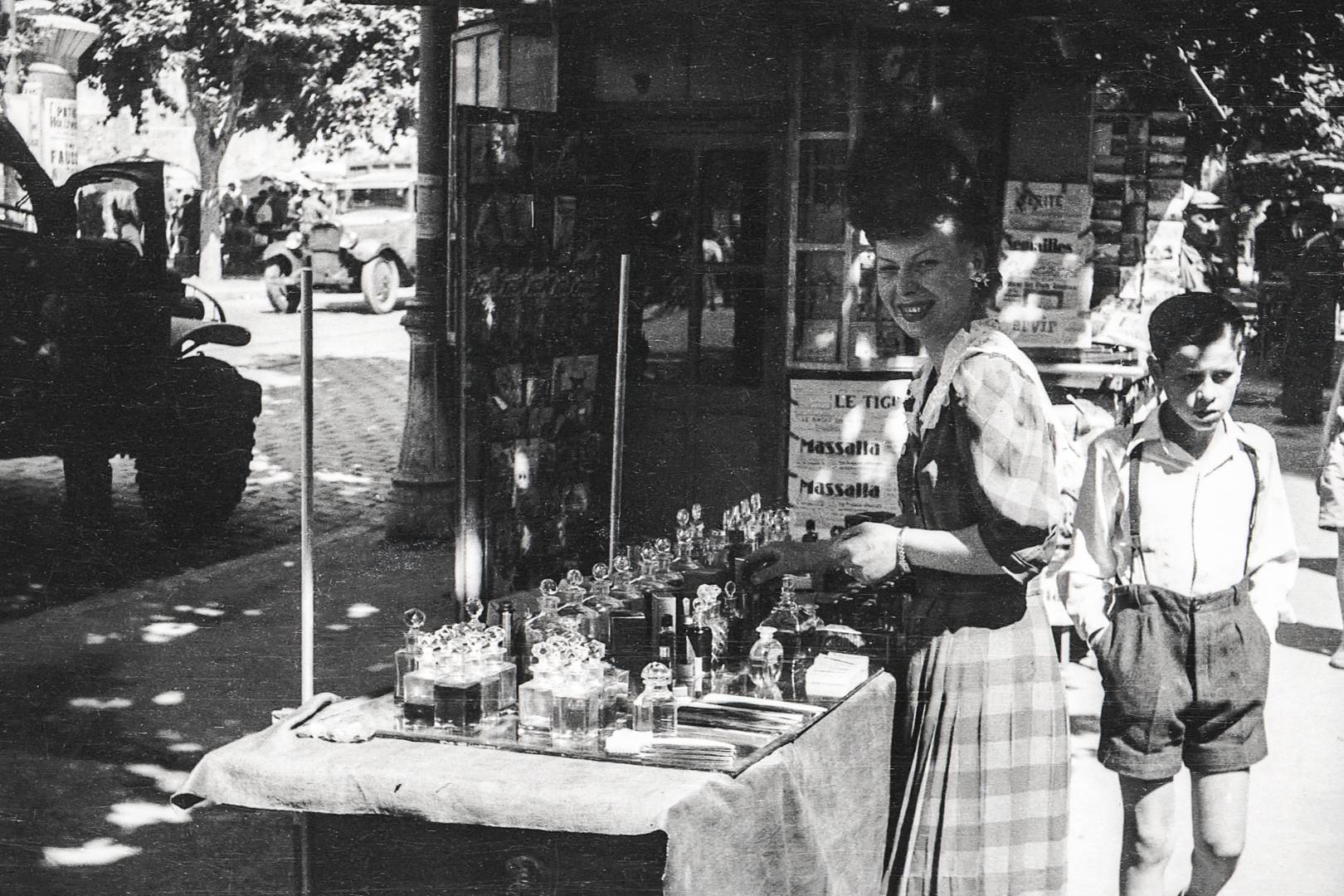
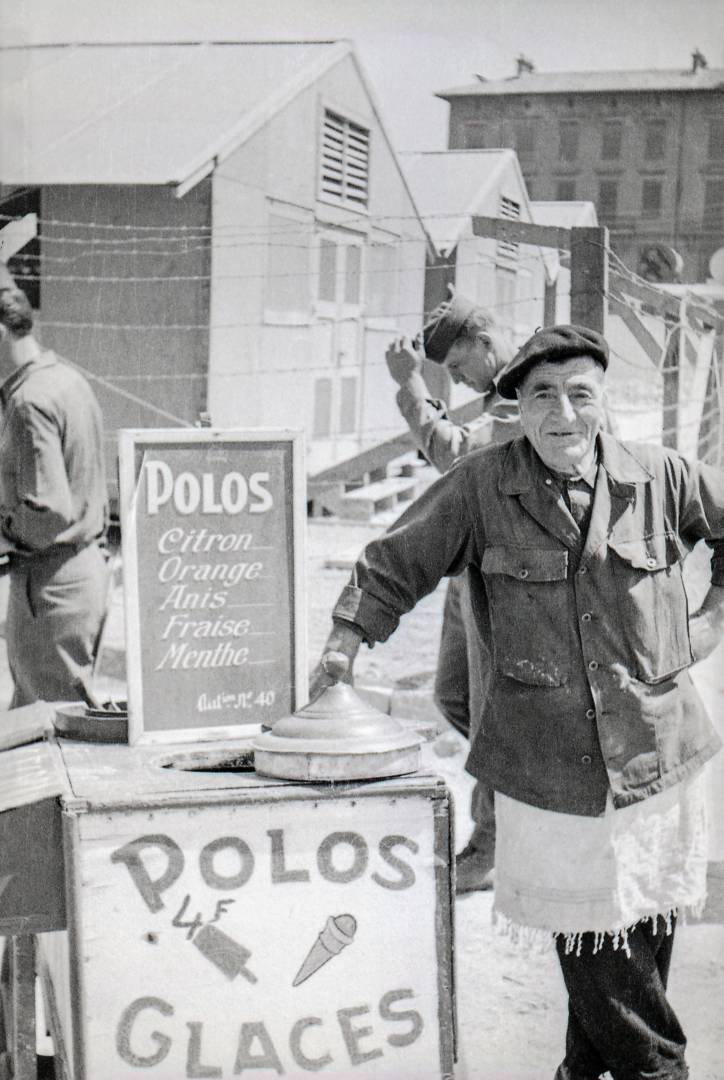
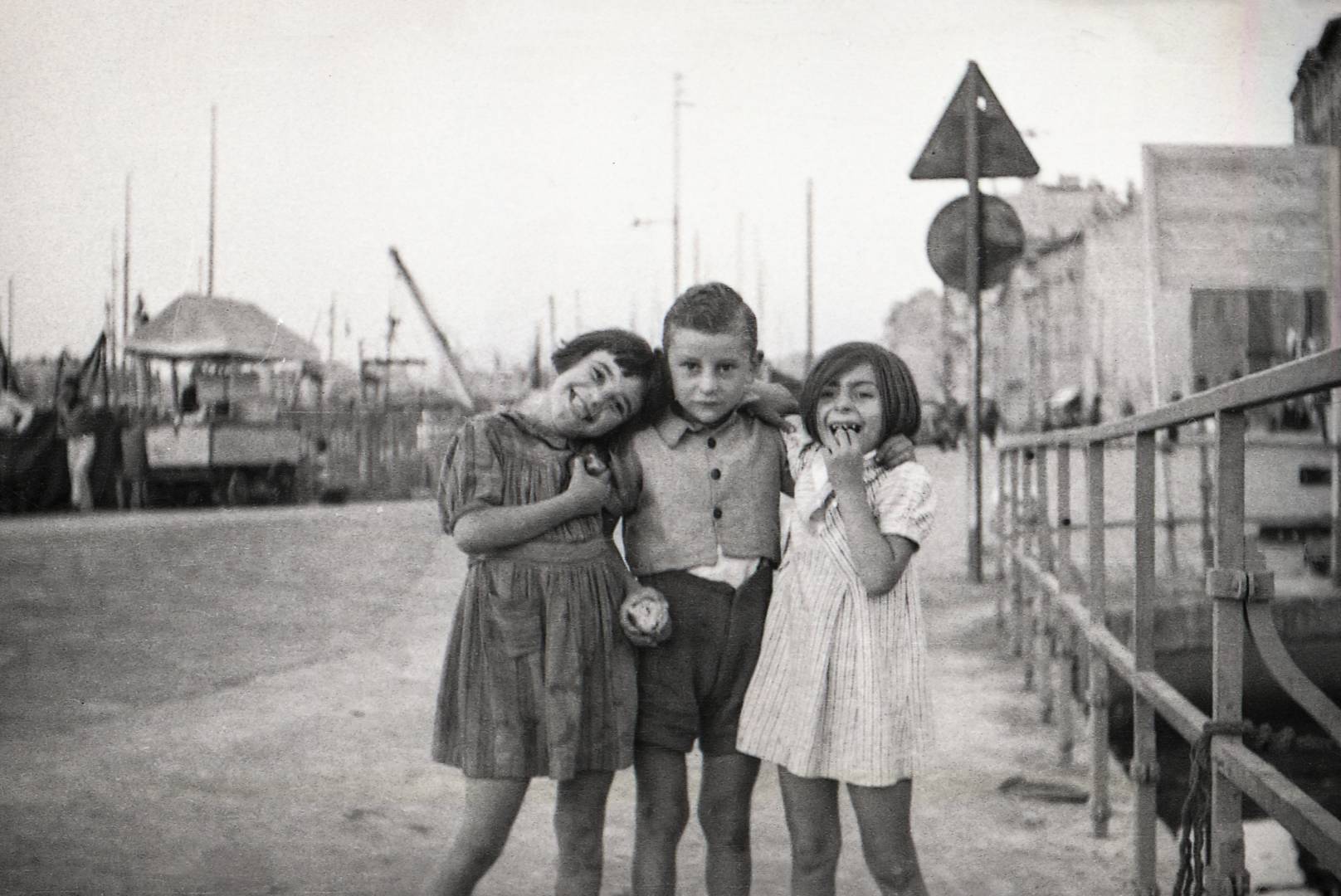
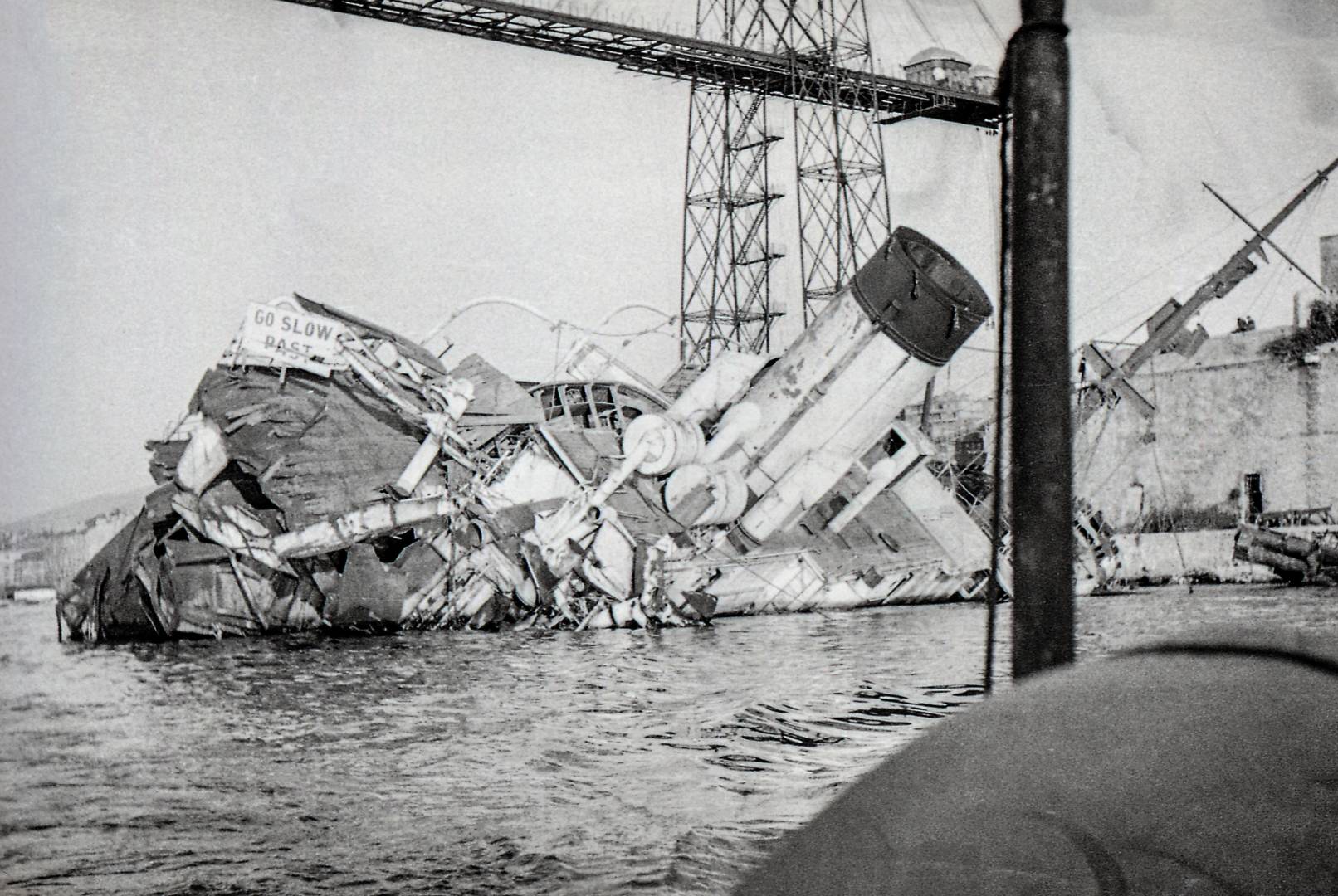
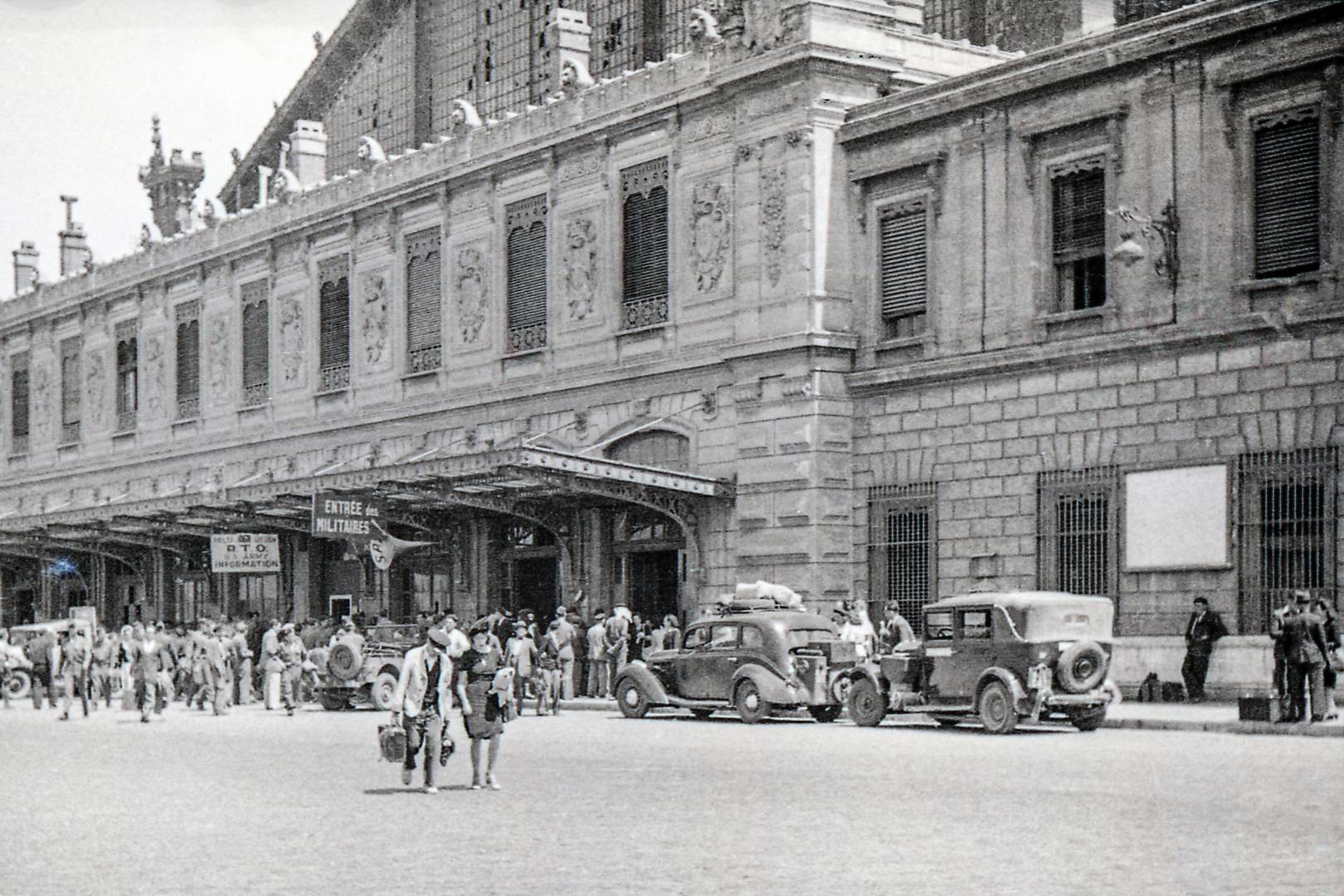
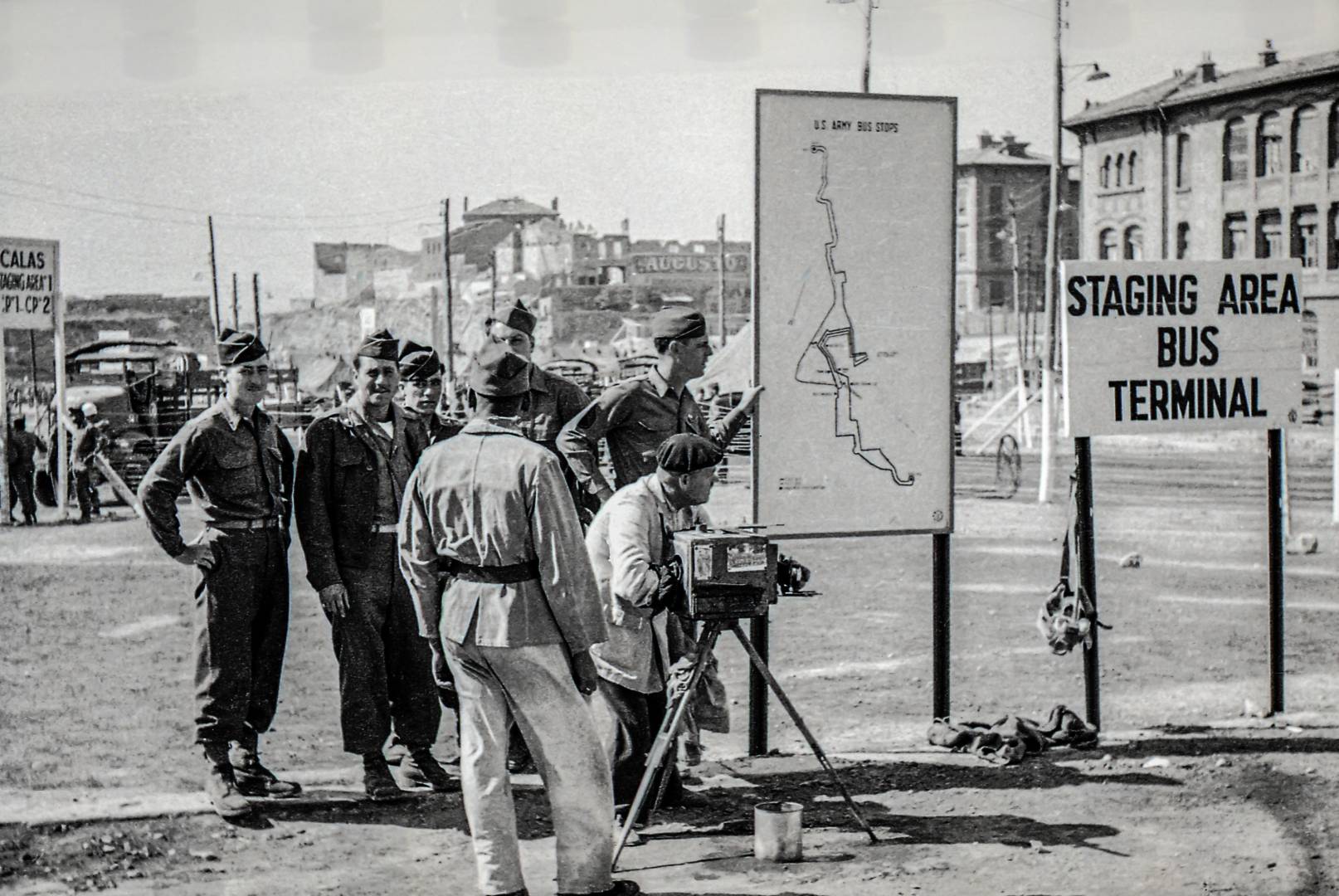
Hello Lee
Here is my best guess of the movements of Philip Adalman.
1. Spent time in the UK in the autumn/winter of 1944 before going to France via Le Havre
2. Probably posted to the US military hospital at “Cigarette Camp, Pall Mall” at Etretat, France
3. Probably posted to a US military hospital at a “City Camp” near Reims
4. Spent time in late spring/early summer 1945 at Marseille which was a rest and recuperation
area for US troops on leave. Whether Philip was on leave or working there, we do not know
though if he was on leave he would have had a chance to visit Paris and Arles.
Chris
Chris: Thanks! That is really interesting. I found some articles about the Cigarette Camps on line, which is also interesting. I am wondering if it is going to be possible to find out what Philip’s unit was. Most units have historians who might be interested in this article. I subscribe to Ancestry.com but I was not able to find that information in the records that I have access to.
The photographer is not pointing the camera at anything. He is either loading some more film into the camera or developing a photo that’s why he has his arm halfway inside the back of the camera.
Re-film crew picture
This is just a theory of what may be going on here. As you can see the soldiers are waiting by a military bus stop. To possibly go back to camp. So this would’ve been a great pitch area for the photographer to wait to try and do some business while waiting for the next bus to arrive. You will note that they have placed their bags between two posts. The bags themselves are not very full so obviously there is no kit in there. So they all put their bags down and Photographer would have taken the picture. I would think based on the other photos as well in France this is possibly the summer time because most people are wearing light clothing. As to the time of day I suspect that this was quite late in the afternoon or early evening looking at the length of the shadows.
The soldiers could be waiting for the bus, or could be waiting in line to have their picture taken. I wish I knew where they were standing and what the photographer was aiming at. There could have been something interesting in the background of his photos. The soldier at the top right of the group is clearly staring intently at something in the same direction that the photographer is pointing.
Thanks for this Lee, I found it very interesting. The photos will stand as a record for the generations to come. I have a printed letter from the King to my grandfather on his release from captivity in 1918 and these records bridge the years providing a window on our forebears’ lives and experiences. Enjoyed your website as well.
Dear Lee Goodwin, this is a fascinating document. Here in Germany, we had a whole generation of men who came home more or less speechless from the war (if they came home at all). All the more interesting is it to read such a story from a completely different perspective. The pictures are good and some of them are even great. I wonder how a soldier had the time, the freedom, and the nerves to practice his passion. JP
There are many more of Philip’s excellent pictures on Lee’s website
https://lee-goodwin.squarespace.com/philip-adalmans-wwii-photographs
I now wish we had used more of them. I’ve suggested to Lee that we could run a sequel, using more of the pictures, particularly if we can identify more of the locations.
Mike
Wonderful images and story. I like the Etretat image as it is only 28 kilometres from home and a favourite outing at weekends. They’ve now built a viewing platform not far from the bunker. The market series in Marseille are my favourite. Thanks for sharing
Jean
Jean: I’m glad you like the photos. On my website (https://lee-goodwin.squarespace.com/philip-adalmans-wwii-photographs), after the photo of Etretat I posted a picture of a small town that Philip took somewhere between Etretat and Paris. Do you recognize it? I’d like to be able to identify it.
It may be the entrance of Yport but I’m not absolutely certain. The way the town is bult with that ribbon development street at the bottom of a vale makes me think of it. Yport is a seaside town about 12 km north of Etretat. If you have any image of the harbour I’d reognize it at once. if you google “vieilles photos d’yport” it may help you
Hello Lee and Jean
I have located the “small town” as shown on your website and also where Philip Adalman took this particular photograph within 100 yards.
The view is of the northeast part of Etretat itself and the street running left to right in the photograph is “Chemin des Fauvettes”.
My first army posting after Sandhurst was as a survey officer in the Royal Artillery so I have a good feel for the lie of the land.
Chris
Now I can see why you were able to contribute so much to the Swiss Roll mystery. Perhaps we should do a sideline in this sort of investigative history. I find it fascinating. It’s especially rewarding when we are dealing with a set of pictures taken by a talented photographer such as Philip.
Chris: Thanks for the detective work! I looked at that area in Google Maps and I can recognize some of the features using Google Street View. Some of the buildings in Philip’s photo are still there.
Thank you for sharing these images and personal story of discovery. Fascinating.
Wonderful story and pictures! I would think you could obtain the military records of your great-uncle to nail down the timeframe.
Just looking at the images, I would say late Spring, early Summer 1945 at the earliest. Any time earlier you would see that they were in cold weather. Also, since France was not liberated until the late Summer/Fall of 1944, you would see a lot more war time damage in the pictures and it would not have been so easy to travel extensively in France.
Bill: I’m glad you like the photos. The only clue I have to the time is that Philip had to have been in Marseille sometime between August 22 1944, when the north tower of the Marseille Transporter was destroyed by the Germans, and September 1, 1945, when the south tower was detonated.
If only Philip had used a Leica (and, who knows, he might have done), this would have made a good feature for Viewfinder! It’s only conjecture that he borrowed one of Lee’s grandfather’s cameras. He is a good photographer and could well have owned his own gear.
Hi Lee-
Great job of sleuthing. You’ve painted a picture in photographs and words that Phillip’s children and grandchildren will relish for years to come. And what a wonderful gift to the rest of Phillip’s extended family like me, a nephew, who only got to meet Phillip when I was a young man. Thanks for bringing us all a little closer.
A superb bit of recovering forgotten history! Thank you. I was wondering whether the bombed church was St James, Picadilly?
I’m not sure, John. I did make a mental note to investigate but didn’t get round to it. Now you’ve named St James’s Piccadilly (which I know well) I am encouraged to check further.
John: I think you are right. I looked at St. James, Picadilly, and it looks like the same church.
Thanks for the identification.
John: I took a screenshot of St. James Picadilly on Google Street View and posted it on my website next to the picture of the bombed church. They look identical. I’m impressed that they were able to restore the church after the extensive damage shown in Philip’s photo. Google Street View is a great tool; it also helped me to identify the Arles Hotel de Ville as well.https://lee-goodwin.squarespace.com/philip-adalmans-wwii-photographs
Re: Film crew in Marseille
In fact this photograph shows a local photographer using a Ferrotype type camera. This type of camera would have developed the pictures while you wait. So it’s not a film crew.
Thanks Ivor, I was wrong about the cine camera. I had noticed the absence of moving parts on the camera, but the gang around the camera looked like ‘extras’. It is still a wonderful photo of a place and time. The Ferrotype camera must have included a ‘dark bag’ inside as the photographer has his hands stuck in the back of the camera. Mella Travers at the Darkroom here in Dublin calls the usual black changing bag with armholes a ‘nun’s knickers’. We did not use a ‘nun’s knickers’ for the ‘Swiss Roll’ brass FILCA cassette, but instead we used the actual darkroom with the lights switched off. I opened the FILCA (not always easy with ancient brass devices) and then handed her the film spool in complete darkness for tank spooling and she used a scissors to cut off the last piece. The dexterity which some people can achieve with such devices is remarkable. I have seen Mella doing an interview for a photo magazine while working with her hands inside a changing bag.
William
Ivor: Thanks for the clarification. I am learning a lot about the technology of the time through Philip’s photos. They also included a photo of a strange looking car he saw in Marseille (you can see the photo by following the link at the end of the article). It turns out it was a car that had been adapted to burn wood gas produced in tanks mounted on the back of the car.
Hi Lee,
What a wonderful historic wartime journey. And I am grateful you managed to unravel many of the mysteries left behind.
I spent many years with my late grandfather who served in World War 2, he only passed in 2019. However his stories that we could wheedle out of him, certainly about being on the South Atlantic convoy to South Africa, and the impact on him and his thoughts, were in my view very human, and very sobering. No wonder none of those that survived talked much about their experience, one suspects it was not pleasant.
Thank you for sharing this with us, it is so enlightening and enjoyable.
Best wishes
Dave
What a wonderful article and some really good “street” photographs that give you a good sense of time and place. It still amazes me that in the midst of war and chaos and being in a strange country, that you have the wherewithal to take a camera and take pictures that are much better than simply decent.
I’m inspired to go through an old metal trunk that for years has held my late father’s 35mm transparencies and negatives, and 8mm films from when he first went to Côte d’Ivoire in 1951 as a missionary with Eglise Protestante through to when we came “home” to England in the early 1960’s. It’s a daunting task and I’m trying to decide whether to simply close my eyes and hand it over to some organization or studio to do it for me…
Hello Lee,
What a fascinating article. Thank you for posting it on Macfilos.
The images are very impressive. I will spend a bit of time researching what units Philip Adalman was likely to have been serving with, having taken his route from; Le Havre, Paris, Reims and finally to Marseilles. Like “Swiss Roll”, it is intriguing to piece together pieces of the jigsaw.
It seems William, in a future article, is about to do the same with his father’s war time experiences.
Indeed my own father had a fascinating war time service and in the back of an old diary I found his itinerary of exactly where and when he served. In the summer of 1944 he was attached to the American 7th Army and landed at St Tropez as part of The South of France landings on 16 August. He was serving with the Ultra organisation (Special Liaison Units or SLUs) and therefore there are only a few photographs of his wartime service. With the photographs which do exist perhaps this could be the subject of a future article . Indeed the Ultra (code breaking) story was kept secret for 29 years after the war and details were only released in 1974.
Chris
Chris: I’m glad you enjoyed the article, and I would be very interested if you find anything about Philip’s unit. The Adalman branch of the family did not do well in WWII. Philip lost one nephew (Melvin Adalman) who died on Iwo Jima, and another (Bernard Finestone) was badly wounded in Italy. So it is no wonder they did not want to talk about it. My father’s side of the family fared much better. My father was with the Army Air Corps on Guam, my uncle was in the Navy in the Pacific and my grandfather was with the Navy in NYC. They all survived the war unscathed so they were not nearly as reluctant to talk about it.
Lee, this is the type of photography story that really appeals to me. Eli had great taste in cameras, but Philip, who used the cameras for these photos, was an excellent photographer. The ones taken at the street market in Marseille are splendid and really capture some character from the subjects. The negatives seem to have been generally good and I would not worry about the odd sprocket hole leak. There could have been a darkroom issue or possibly a camera issue. It is too late to do anything about that now, but what you have is splendid. They are in much better condition than my ‘Swiss Roll’ negatives, which had got light leak damage before they were processed.
That detail from the face of the Arc de Triomphe also appears in a 1939 photograph taken by my father which will feature in an upcoming article on Macfilos. Arles is, of course, in normal times now the site of one of the largest photography festivals in Europe. Finally, that group shot with the cine camera operator wearing a beret is marvellous. While they are beside a US military bus stops guide, they look like French troops to me. It would be nice to actually find the film that they were making. The picture truly captures a time and a place and is beautifully composed.
William
Thank you William. It was your fascinating Swiss Roll story that made me think to turn this into an article. Maybe it will inspire others to share historical stories like these as well.
A very interesting story, with beautiful pictures! Thank you for sharing.
Philip Adalman appears to have been a good photographer indeed, with lots of time to photograph besides his military duties. I assume that the negatives are indeed 35 mm ones, and getting such technically good resuts with these cameras took some expertise indeed. Certainly they could have been taken with the right hand Contax in the last picture, but not with the left one! That is a IIa, which was introduced in 1946. The right hand one is a II, introduced in 1936.
I was also impressed by the composition of these photographs. Technically, also, he managed very sharp results in some instances—I am thinking particularly of the bombed church.
Mike: I was also impressed with Philip’s technical results. Most of the photos were very sharp. Unfortunately, the digital images did require a lot of clean up because the negatives had not been stored very carefully and were not in good condition after 70 years. I also wish that Eli’s darkroom technique had been better. You can see sprocket shadows in the sky of some of Philip’s photos, which result from improper spooling of the 35mm film in the developing tank.
Thanks Per. I also liked his compositions. I was also struck by how he was able to get people to interact with him as he took their photos. I never met him, but he must have been quite a character.